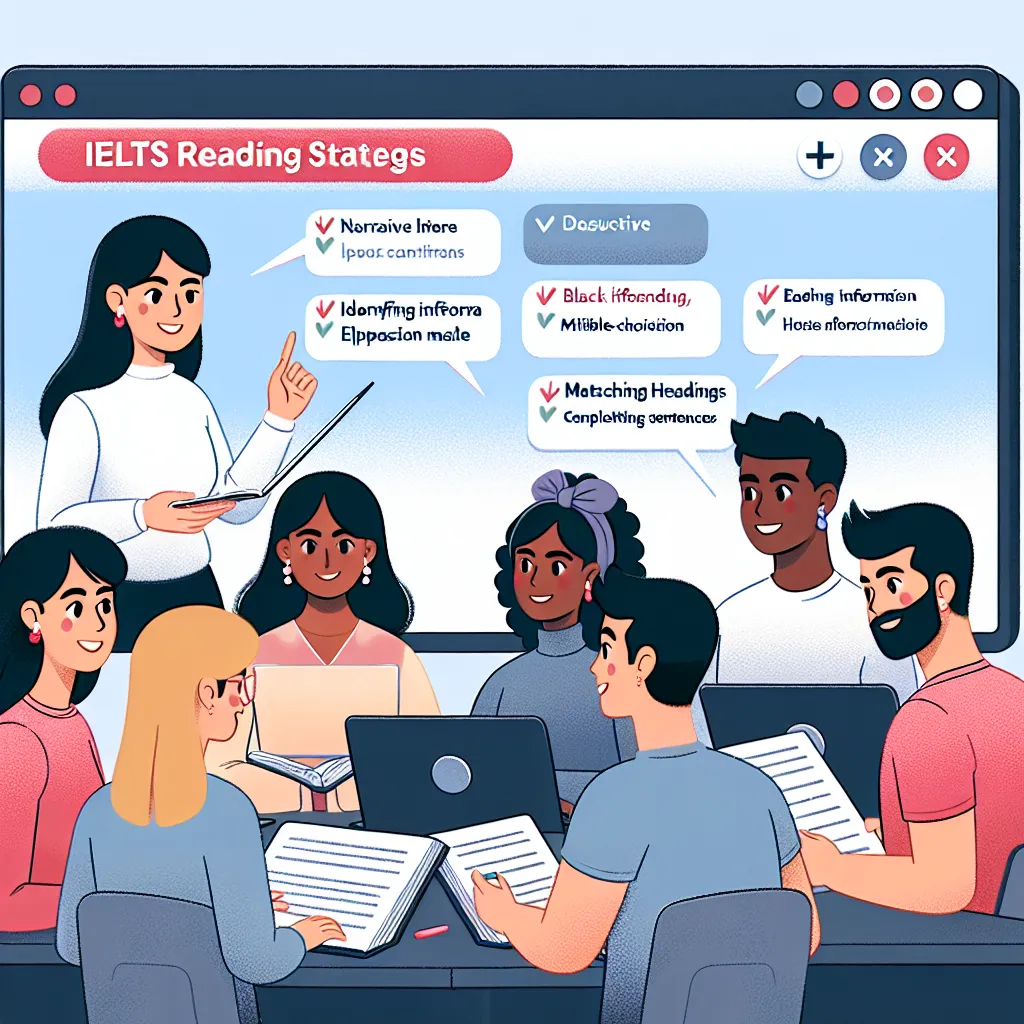The IELTS Reading section is a crucial component of the test, requiring candidates to demonstrate their ability to understand complex texts and extract relevant information. As an experienced IELTS instructor, I’ve observed that creating an online course focused on IELTS Reading can significantly enhance students’ performance. This topic has gained popularity in recent years, especially with the rise of remote learning. Based on trends and the increasing demand for online education, it’s highly likely that IELTS Reading preparation will continue to be a sought-after subject for online courses.
Nội dung bài viết
 IELTS Reading Online Course
IELTS Reading Online Course
Creating an Effective IELTS Reading Online Course
1. Sample IELTS Reading Test: How to Create an Online Course
Passage
Creating an effective online course requires careful planning and execution. The first step is to identify your target audience and their specific needs. This will help you tailor the content and delivery method to suit your learners. Next, outline your course structure, breaking it down into manageable modules or lessons. Each module should have clear learning objectives and outcomes.
When designing your course content, focus on engaging and interactive materials. Utilize a variety of media types, such as text, videos, infographics, and quizzes, to cater to different learning styles. It’s crucial to create a balance between theoretical knowledge and practical applications to ensure students can apply what they’ve learned.
One of the key advantages of online courses is the flexibility they offer. Consider incorporating both synchronous and asynchronous learning opportunities. Synchronous sessions, such as live webinars or group discussions, provide real-time interaction and immediate feedback. Asynchronous components, like pre-recorded lectures or self-paced assignments, allow students to learn at their own convenience.
To enhance the learning experience, integrate opportunities for student collaboration and peer-to-peer learning. This can be achieved through discussion forums, group projects, or virtual study groups. Additionally, regular assessments and feedback mechanisms are essential to track student progress and identify areas for improvement.
Technology plays a crucial role in online course delivery. Choose a reliable learning management system (LMS) that supports your course requirements and is user-friendly for both instructors and students. Ensure that your course materials are accessible across different devices and platforms to accommodate various learner preferences.
Finally, continuous evaluation and improvement of your online course are vital. Collect feedback from students, analyze course metrics, and stay updated with the latest e-learning trends to refine and enhance your course over time. By following these guidelines, you can create an engaging and effective online course that provides value to your learners and achieves its educational objectives.
Questions
-
What is the first step in creating an effective online course?
A) Outlining the course structure
B) Identifying the target audience
C) Designing course content
D) Choosing a learning management system -
Which of the following is NOT mentioned as a type of media to be used in course content?
A) Text
B) Videos
C) Infographics
D) Podcasts -
The passage suggests that online courses should include:
A) Only synchronous learning opportunities
B) Only asynchronous learning opportunities
C) A combination of synchronous and asynchronous learning opportunities
D) Neither synchronous nor asynchronous learning opportunities -
According to the passage, what is the purpose of integrating student collaboration?
True/False/Not Given
a) To enhance the learning experience
b) To reduce the workload of the instructor
c) To make the course more challenging for students -
The author recommends choosing a learning management system that is:
A) The most expensive option available
B) User-friendly for instructors only
C) Compatible with only one type of device
D) User-friendly for both instructors and students -
Complete the sentence:
Regular assessments and feedback mechanisms are essential to ____ student progress and ____ areas for improvement. -
What does the passage suggest about the process of creating an online course?
A) It is a one-time effort
B) It requires continuous evaluation and improvement
C) It should focus solely on theoretical knowledge
D) It is best done without any student input
2. Answer Key and Explanations
-
B) Identifying the target audience
Explanation: The passage states, “The first step is to identify your target audience and their specific needs.” -
D) Podcasts
Explanation: The passage mentions “text, videos, infographics, and quizzes” as examples of media types but does not mention podcasts. -
C) A combination of synchronous and asynchronous learning opportunities
Explanation: The passage suggests incorporating “both synchronous and asynchronous learning opportunities.” -
a) True – The passage states, “To enhance the learning experience, integrate opportunities for student collaboration and peer-to-peer learning.”
b) Not Given – The passage does not mention reducing the instructor’s workload as a reason for student collaboration.
c) Not Given – The passage does not suggest that student collaboration is intended to make the course more challenging. -
D) User-friendly for both instructors and students
Explanation: The passage recommends choosing an LMS that is “user-friendly for both instructors and students.” -
track, identify
Explanation: The full sentence in the passage reads, “Regular assessments and feedback mechanisms are essential to track student progress and identify areas for improvement.” -
B) It requires continuous evaluation and improvement
Explanation: The passage concludes by stating, “Continuous evaluation and improvement of your online course are vital.”
3. Common Mistakes to Avoid
When tackling IELTS Reading questions similar to those above, be aware of these common pitfalls:
- Overlooking key words in the questions or answer choices
- Relying on prior knowledge instead of the information provided in the passage
- Falling for distractors that use words from the passage but in a different context
- Rushing through the text without carefully reading for detail
- Failing to check if all parts of a multiple-part answer are correct
4. Vocabulary Focus
- Tailoring: (verb) /ˈteɪlərɪŋ/ – adapting or customizing something for a specific purpose
- Asynchronous: (adjective) /eɪˈsɪŋkrənəs/ – not occurring at the same time
- Synchronous: (adjective) /ˈsɪŋkrənəs/ – occurring at the same time
- Metrics: (noun) /ˈmetrɪks/ – a set of figures or statistics used to measure or evaluate something
5. Grammar Spotlight
Passive Voice in Academic Writing:
Example from the text: “Regular assessments and feedback mechanisms are essential to track student progress…”
Structure: Subject + be + past participle
This structure is commonly used in academic writing to maintain an objective tone and focus on the action rather than the actor.
Tips for IELTS Reading Success
- Practice time management: Allocate your time wisely across all passages and questions.
- Improve your skimming and scanning skills to quickly locate relevant information.
- Expand your vocabulary, focusing on academic and topic-specific terms.
- Familiarize yourself with various question types and develop strategies for each.
- Read extensively beyond IELTS materials to improve your overall comprehension skills.
By following these guidelines and consistently practicing with diverse reading materials, you can significantly enhance your performance in the IELTS Reading section. Remember, creating an online learning experience that mimics the actual test conditions can be an excellent way to prepare. Additionally, exploring best practices for online learning success can help you maximize the benefits of your IELTS preparation journey.


